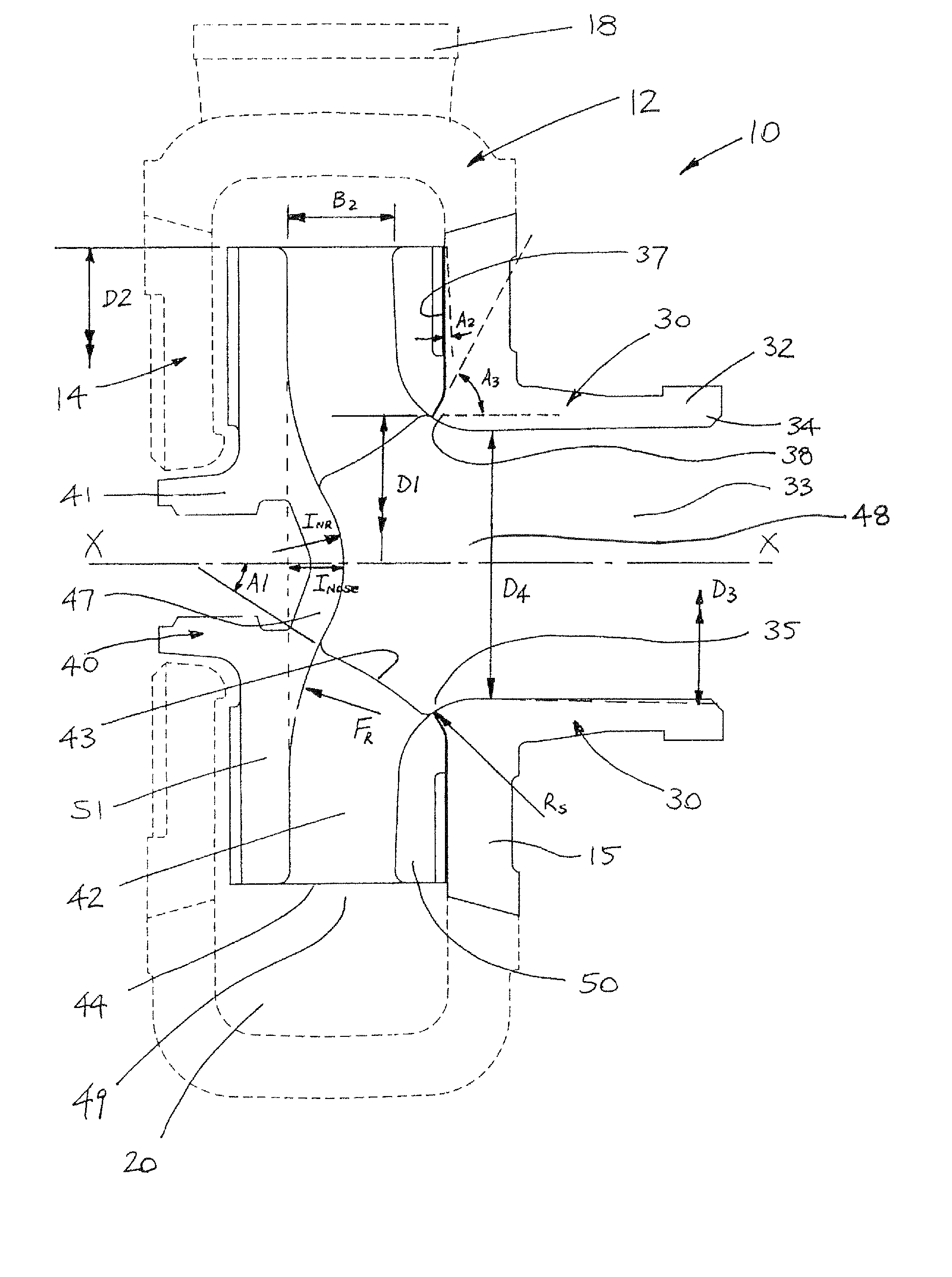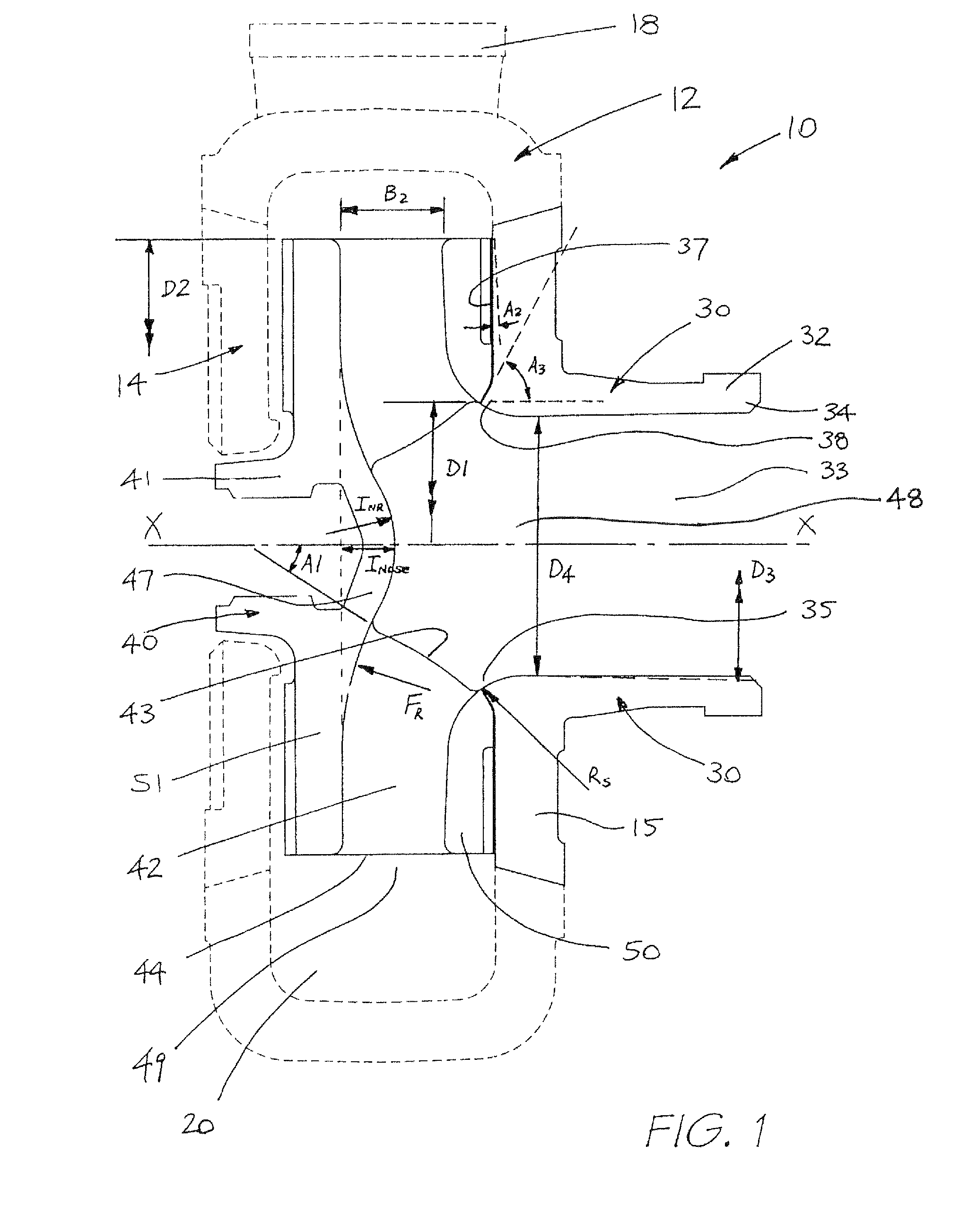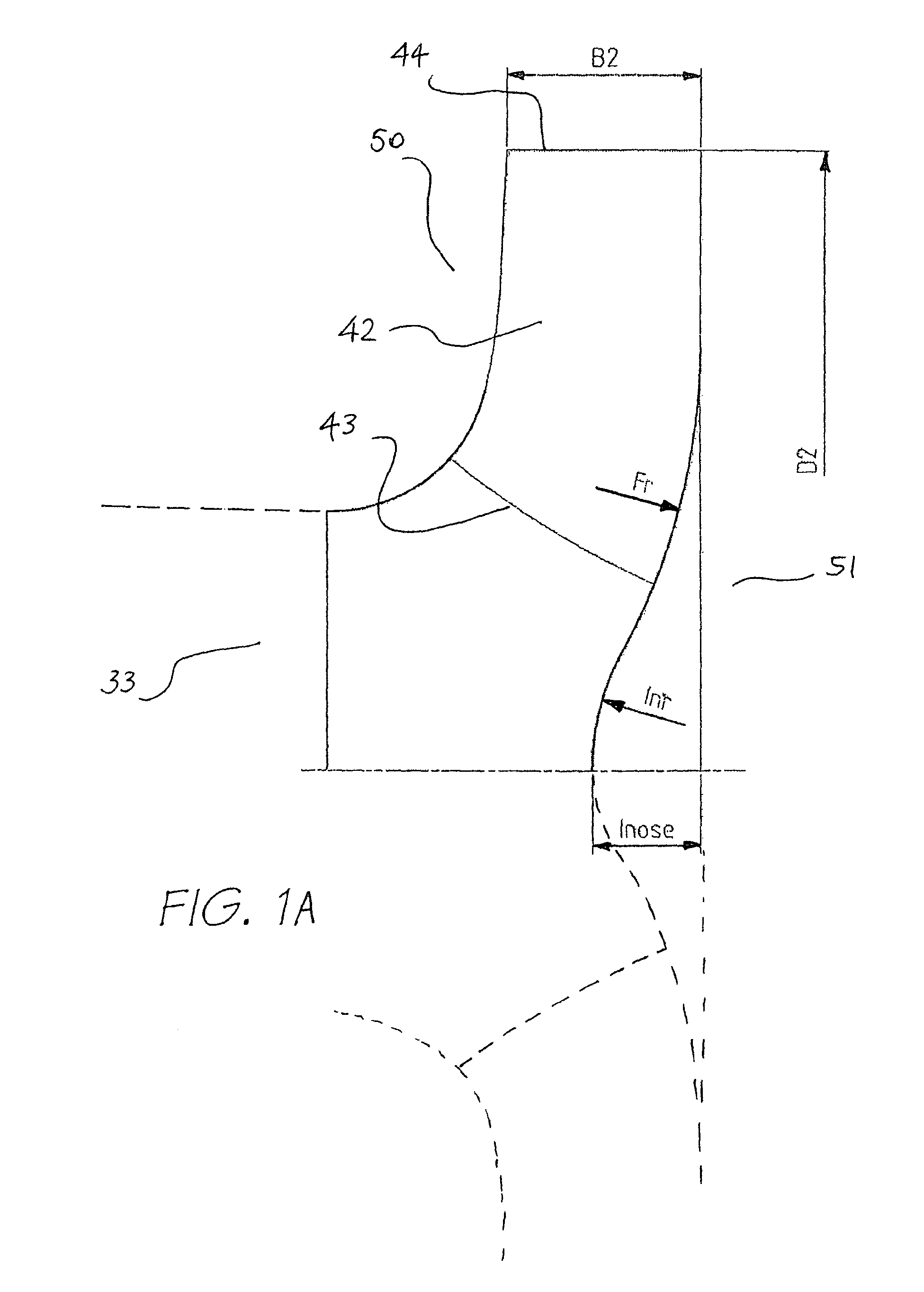Centrifugal pump impellers
a centrifugal pump and impeller technology, applied in the field of centrifugal pumps, can solve the problems of reducing the life of centrifugal slurry pumps, high wear rates, and reducing the service life of centrifugal pumps, so as to increase the service life, and increase the effect of energy loss
- Summary
- Abstract
- Description
- Claims
- Application Information
AI Technical Summary
Benefits of technology
Problems solved by technology
Method used
Image
Examples
example 1
[0105]Both the new and conventional pumps were run at the same duty flow and speed on a gold mining ore. The conventional pump impeller life was 1,600 to 1,700 hours and front liner life 700 to 900 hours. The new design impeller and front liner life were both 2,138 hours.
example 2
[0106]Both the new and conventional pumps were run at the same duty flow and speed on a gold mining ore which results in rapid wear due to the high silicon sand content of the slurry. Following three trials, the new impeller and front liner showed consistently 1.4 to 1.6 times more life than the conventional metal parts in the same material.
[0107]The conventional impeller typically failed by gross wear on the pump vanes and holing of the backshroud. The new impeller showed very little of this same type of wear.
example 3
[0108]Both the new and conventional pumps were run at the same duty flow and speed in an alumina refinery in a duty which was critical to providing the proper feed to the plant. This duty was at high temperature and so favoured an impeller design with low cavitation characteristics.
[0109]The average life of the conventional impeller and front liner was 4,875 hours with some impeller wear, but typically the front liner failed by holing during use.
[0110]The new impeller and front liner life were in excess of 6,000 hours and without holing.
PUM
 Login to View More
Login to View More Abstract
Description
Claims
Application Information
 Login to View More
Login to View More - R&D
- Intellectual Property
- Life Sciences
- Materials
- Tech Scout
- Unparalleled Data Quality
- Higher Quality Content
- 60% Fewer Hallucinations
Browse by: Latest US Patents, China's latest patents, Technical Efficacy Thesaurus, Application Domain, Technology Topic, Popular Technical Reports.
© 2025 PatSnap. All rights reserved.Legal|Privacy policy|Modern Slavery Act Transparency Statement|Sitemap|About US| Contact US: help@patsnap.com



